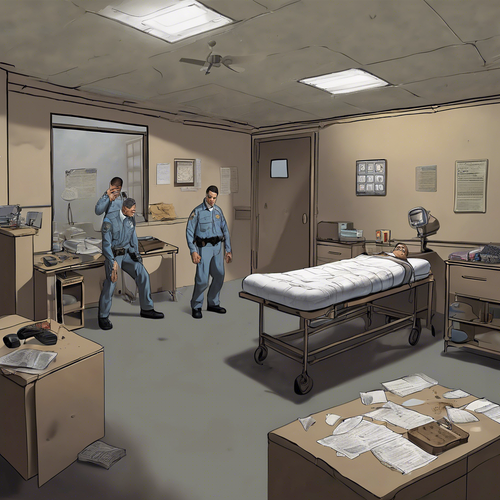“`html
Inmate Death at Kern Valley State Prison Under Investigation as Homicide 🏛️🔍
In a correctional facility where the motto is often “rehabilitation,” the recent death of an inmate at Kern Valley State Prison has ignited a firestorm of scrutiny—revealing the stark irony that in a place designed for justice, life can sometimes hang by a thread. The official investigation into this tragic incident, declared a homicide, unfolds like a dark narrative, raising questions not just about this particular case, but about the systemic issues lurking within the prison walls. How did we reach a point where a prison, meant to serve justice, becomes an arena for violence? ⚖️
The deceased, identified as 38-year-old inmate Robert Young, was found unresponsive in his cell on Monday afternoon. Though authorities have released scant details, the news of his untimely demise has permeated not only the prison’s social fabric but has also reverberated throughout the community. While the prison administration calls for an internal investigation, the public is left grappling with visceral shock and confusion—did justice fail yet again? 🤔
A Tragic Irony: Life Behind Bars
The situation at Kern Valley State Prison is a striking antithesis to the ideals of rehabilitation and safety promulgated by the state. Situated amidst the Sierra Nevada, it stands as a fortress of correction, yet it resembles more a battleground than a place for restoration. With the prison being one of the most overcrowded state facilities, the tragic outcomes of such an environment become an all-too-predictable outcome.
Young’s death is symptomatic of a much larger crisis. Overcrowding can be likened to pouring too much water into a gas tank—it ultimately leads to a disastrous overflow. Inmates, already stripped of their autonomy, find themselves in an environment where aggression and despair often coalesce into violence.
Unmasking the System: A Culture Built on Fear
Prison culture is a complex web of hierarchy, fear, and survival. Beyond mere facts and figures, an inmate’s life is frequently dictated by an unspoken law—a labyrinthine set of rules that govern behavior and interactions. In this particular case, insiders have reported a surge of gang-related conflicts that seem to have escalated recently, putting inmates like Young at serious risk. Failing to address these underlying tensions is akin to slapping a band-aid on a gunshot wound; it might look good temporarily, but it does nothing for the real problem.
The Role of Oversight and Accountability
Many seek explanations from the California Department of Corrections and Rehabilitation (CDCR), which has been accused of turning a blind eye to the conditions fostering violence. With mounting pressure from advocacy groups, one can only hope that the investigation will lead to accountability. Yet, one can’t help but wonder—will this be yet another missed opportunity for real reform? Are we witnessing a mere façade of inquiry, cloaked in the language of accountability, only to fade into bureaucratic oblivion? 🤷♀️
Call for Action: Advocacy in a Culture of Silence
When discussing prison reform, the topic often elicits emotions so strong they could ignite a forest fire. Advocacy groups scream for attention while officials often seem lost in a cacophony of indifference. Why should the dying whispers of inmates go unheard? Perhaps Young’s case—more human tragedy than just a statistic—will be the catalyst for change, or perhaps it will yet again slip silently into history’s horrifying tally of neglect. 🗣️
As the investigation unfolds, the community is left pondering a myriad of questions: What now? How many more lives are teetering on the brink? And when will a justice system, ostensibly dedicated to redeeming humanity, recognize the humanity in its charges? In this juxtaposition of life and lethal indifference, one must wonder if justice, much like Young, has become a casualty in the prison system’s tragic saga. 💔
“`










